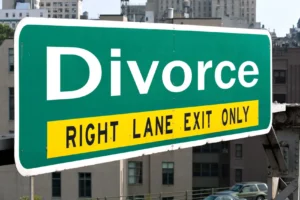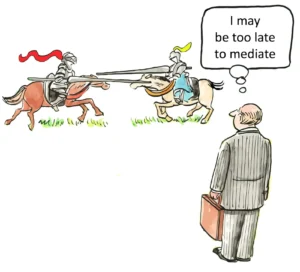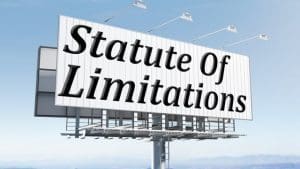What are the ongoing debates around diversity, equity, and inclusion within law firms?
The question of what are the ongoing debates around diversity, equity, and inclusion within law firms is not only timely but also emblematic of broader societal shifts and legal complexities facing the American legal profession. As law firms strive to modernize, they find themselves at the crossroads of cultural change, generational expectations, evolving client demands, and a rapidly shifting legal and political landscape. The resulting debates are multifaceted, deeply consequential, and, in many respects, unresolved.
Law firms have historically been bastions of tradition, with recruitment, advancement, and compensation systems that long favored a narrow demographic profile. Over the past decade, however, law firm diversity has become a central concern-not just for moral or reputational reasons, but as a matter of business strategy and client expectation. Major corporate clients increasingly require their outside counsel to demonstrate measurable progress in diversity, equity, and inclusion (DEI), and law firms have responded with a proliferation of DEI programs, leadership appointments, and public commitments. Yet, these efforts have not been without controversy or challenge.
The most persistent and visible debates center on the effectiveness, fairness, and legality of DEI initiatives. Critics from within and outside the legal industry question whether DEI programs genuinely foster meritocracy or, instead, introduce new forms of discrimination and division. Proponents argue that without intentional efforts, the profession will remain closed to talented individuals from underrepresented backgrounds, to the detriment of both the legal system and society at large.
Recent political and legal developments have intensified these debates. The return of a conservative administration to the White House has emboldened critics of DEI, with promises to roll back federal support for such initiatives and to scrutinize law firm practices for potential violations of anti-discrimination laws. Lawsuits led by activists like Edward Blum and organizations such as America First Legal have targeted diversity fellowships and hiring practices, alleging that they constitute impermissible race-based preferences. These legal challenges draw on provisions of the Civil Rights Act, particularly Section 1981, which prohibits racial discrimination in contracting, and Title VII, which governs employment discrimination. The specter of litigation has led some law firms to rebrand or scale back their DEI efforts, while others have doubled down, emphasizing the business and ethical imperatives for diversity.
Despite the legal headwinds, there is measurable progress in some areas. According to recent industry reports, minority attorneys now comprise over 22% of lawyers at major firms, and women account for more than 40% of all lawyers for the first time. LGBTQ representation among associates has surpassed 7%, and firms are increasingly transparent about their diversity statistics. However, these gains are uneven. At the partnership level, women and people of color remain significantly underrepresented, with women of color making up just over 5% of all partners. The pipeline for diverse talent, particularly through summer associate programs, has also shown signs of strain, with a recent decline in the percentage of Black summer associates. These data points fuel ongoing debates about the sufficiency and sustainability of current DEI strategies.
One of the most contentious issues is the use of race- or gender-conscious policies in recruitment, hiring, and promotion. Opponents argue that such policies, however well-intentioned, violate the principle of equal treatment and may run afoul of the law. They point to recent Supreme Court decisions curtailing affirmative action in higher education as a harbinger of similar restrictions in the employment context. Supporters counter that colorblind policies alone cannot overcome entrenched biases and structural barriers, and that targeted interventions are necessary to create a truly level playing field.
The debate is further complicated by generational dynamics within the profession. Gen Z attorneys, the most diverse cohort in American history, bring distinct expectations to the workplace. They demand not only demographic diversity but also equity in opportunity, advancement, and compensation. They are quick to identify and reject performative or superficial diversity initiatives, insisting on transparency in promotion criteria, equitable work assignment systems, and genuine commitment to retaining and advancing attorneys from underrepresented groups. Law firms that fail to meet these expectations increasingly struggle to recruit and retain top young talent. Conversely, firms that demonstrate authentic commitment to DEI gain significant advantages in both the talent market and client development.
The business case for diversity is no longer theoretical. Corporate clients, particularly those in regulated industries or with global operations, now require law firms to field diverse teams as a condition of engagement. The Bloomberg Law DEI Framework and similar benchmarking tools have raised the bar, providing standardized metrics by which clients can evaluate a firm’s commitment to diversity. Law firms that lag behind risk losing business to more progressive competitors. This external pressure has, in many cases, driven more substantive and sustained DEI efforts than internal motivations alone.
Nevertheless, the backlash against DEI is real and growing. Some conservative commentators and policymakers argue that DEI programs have become a form of compelled speech or ideological conformity, stifling dissent and undermining merit. Lawsuits alleging “reverse discrimination” have proliferated, with plaintiffs challenging the legality of diversity fellowships, scholarships, and hiring targets. The legal uncertainty has led some firms to remove explicit references to DEI from their public materials or to recast their initiatives under the broader rubric of “talent development” or “inclusive leadership.”
The risk of getting DEI wrong is significant. Law firms that fail to act on diversity and inclusion face reputational damage, costly lawsuits, and challenges in hiring and retaining staff. Reports of bullying, harassment, and discrimination remain disturbingly common, with one in five legal professionals reporting such experiences in recent surveys. High-profile cases of gender or racial discrimination can quickly become headline news, damaging a firm’s brand and bottom line. At the same time, overzealous or poorly designed DEI programs can expose firms to legal liability and internal resentment, particularly if they are perceived as unfair or exclusionary.
Navigating these risks requires a nuanced and legally sound approach. Leading law firms now invest heavily in bias and harassment training, data-driven assessments of workplace culture, and the development of transparent, objective criteria for recruitment and promotion. Many have established firmwide and local diversity committees, resource groups for underrepresented attorneys, and formal mentorship and sponsorship programs. Succession planning increasingly emphasizes the inclusion of diverse attorneys in leadership pipelines, and firms are more transparent than ever about their progress and challenges.
The debate over DEI is also playing out at the state and federal regulatory levels. Some state attorneys general have issued warnings to law firms and corporations against implementing “race-based quotas or preferences,” while others have reaffirmed the legality and importance of diversity goals. This patchwork of regulatory guidance creates additional uncertainty, especially for firms with offices in multiple jurisdictions.
For all the controversy, there is broad agreement that the legal profession must evolve to reflect the diversity of the society it serves. The question is how to achieve this goal in a manner that is both effective and consistent with the law. The most successful firms are those that move beyond lip service, embedding diversity and inclusion into their core business strategy and culture. This means not only recruiting diverse talent but also creating environments where all attorneys can thrive and advance.
The path forward is uncertain. The political pendulum may swing again, bringing new regulatory priorities and legal interpretations. Client expectations will continue to evolve, as will the demographics and values of the legal workforce. What is clear is that the debates around diversity, equity, and inclusion within law firms are far from settled. They reflect deeper tensions in American society over the meaning of equality, the role of law in redressing historical injustices, and the future of the profession itself.
Law firms that approach these debates with humility, transparency, and a genuine commitment to fairness are best positioned to navigate the challenges ahead. The stakes are high-not only for individual firms but for the integrity and legitimacy of the legal system as a whole. As the profession grapples with these issues, the ongoing debates around diversity, equity, and inclusion will remain at the forefront, shaping the future of law for years to come.
In the current climate, law firms must also contend with the reality that DEI is not merely a matter of internal policy but a subject of public scrutiny and political contestation. The language used in public statements, recruitment materials, and client communications is now carefully vetted for legal compliance and reputational risk. Some firms have broadened the definition of diversity in their fellowship and scholarship programs, inviting applicants to articulate their own understanding of diversity and how it relates to their experiences. This shift reflects a broader trend toward individualized, narrative-based approaches to diversity, which may prove more resilient to legal challenge.
At the same time, the business case for diversity remains compelling. Diverse teams are better equipped to understand and serve a heterogeneous client base, to innovate, and to anticipate emerging legal and regulatory risks. Law firms that prioritize diversity, equity, and inclusion not only fulfill their ethical obligations but also position themselves for long-term success in a competitive and rapidly changing marketplace.
The debates around DEI are not confined to race and gender. Increasing attention is being paid to other dimensions of diversity, including sexual orientation, gender identity, disability, socioeconomic background, and veteran status. Firms are expanding their outreach and support programs to address these dimensions, recognizing that true inclusion requires attention to the full spectrum of human experience.
The generational divide remains a key fault line in the DEI debates. Senior attorneys, steeped in tradition and wary of rapid change, sometimes view DEI initiatives with skepticism or as a threat to established norms. Younger attorneys, particularly those from Gen Z, expect not only fair treatment but also active support for their professional development and well-being. Reverse mentoring programs, cross-generational dialogue, and leadership training are increasingly used to bridge these divides and foster mutual understanding.
Ultimately, the ongoing debates around diversity, equity, and inclusion within law firms are a microcosm of broader societal struggles over identity, fairness, and the meaning of justice. They are shaped by legal precedent, political ideology, economic incentives, and cultural change. The legal profession, with its unique role as both guardian and interpreter of the law, has a special responsibility to get this right.
For law firms, the challenge is to navigate these debates with integrity, balancing legal compliance, business imperatives, and ethical commitments. The path is fraught with risk, but also rich with opportunity. Those who rise to the occasion will help shape a more just, dynamic, and resilient legal profession-one that truly reflects the diversity and complexity of the world it serves.
As the debates continue, one thing is certain: the conversation about diversity, equity, and inclusion within law firms is not going away. It will remain a defining issue for the profession, demanding thoughtful engagement, principled leadership, and a willingness to adapt. The future of law depends on it.
Citations:
- Beyond Advisers Discusses Uncertain Future of DEI in Law Firms
- Risks and Consequences When Law Firm DEI Initiatives Fail
- Diversity in BigLaw: Progress and Challenges Ahead
- Gen Z and the Evolution of Legal Culture
- Bloomberg Law’s DEI Framework for Law Firms
- Legal Challenges Impacting DEI in the Mortgage Industry
- Advancing Law Firm DEI Despite Backlash
- Culture, DEI Strategy, and Litigation Services at Morgan Lewis
- Perkins Coie’s Commitment to Diversity and Inclusion
- Corporate America’s DEI Dilemma: Legal Risks and Commitments
- Husch Blackwell’s Diversity, Equity, and Inclusion Initiatives
- State Attorneys General Defending Diversity, Equity, and Inclusion
- DEI Legal Landscape One Year After Harvard UNC Decision
- How to Assess New Legal Risks of DEI Policies
- YouTube Video: DEI in Law Firms Discussion
- DEI Pipeline in Law Firms: Part 2
- Conservative Efforts to Challenge DEI with Bias Claims
- CNN Explains Diversity, Equity, and Inclusion
- Diversity Initiatives in BigLaw: Are Firms Walking the Talk in 2025?
- Republican-Led States Demand Law Firms Disclose DEI Practices
- Trump’s DEI Executive Order and Attacks on Diversity
- Podcast: The Future of DEI Programs in the Legal Industry
- GOP-Led States Want Law Firms to Disclose DEI Practices
- Overcoming Obstacles to DEI in the Legal Profession
- Semantic Scholar: Research Paper 98c1d4d8afbda93d6b12ad466f7485fb9a07a5c6
- Semantic Scholar: Research Paper ef02b99e6f1e252f37a0eca5eb6a5facfcfbd6d8
- Educational Content on Legal Precedents
- Trump Administration Policies and Legal Ramifications
- The Importance of Title 1 Schools in Education
- Understanding Zoning Laws and Their Impact
- Impacts of Undesirable Discharge in the Military
- Attorneys: EEOC’s DEI Focus Doesn’t Change Law
- Trump, DEI, and Perkins Coie in Law Firms
- DEI Compliance and Legal Counseling Services
- US Civil Rights Agency Warns Law Firms Over DEI Policies
- Gibson Dunn DEI Task Force Update April 8, 2025
- ALFDP News and Updates
- DEI for Law Firms: Insights and Strategies
- Top Law Firms for Diversity: Associate Satisfaction Surveys
- 10 Costly SEO Mistakes Law Firms Must Avoid
- SEO for Attorneys: Keyword Research Guide
- SEO Diversity and Inclusion: Moz Blog
- Seramount’s 2024 Best Law Firms for Women and Diversity
- Cleary Gottlieb’s Diversity, Equity, and Inclusion Programs
- 5 Tips for Law Firms to Incorporate DEI Best Practices in 2024
- Harnessing Long-Tail Keywords for Law Firms
- SEO Services for Lawyers and Law Firms
- As DEI Faces Legal Attacks, Companies Quietly Alter Programs
- Volvo Group Careers and Job Opportunities
- Semantic Scholar: Research Paper e62df2b685e5188e798349dc3651dccc10a9a12a
- Semantic Scholar: Research Paper 05685f2ad602cb284fecda19fed562f556d36ad3
- Semantic Scholar: Research Paper c1d00b3acb4b16af8488e7321048d7f95e8115c3
- Semantic Scholar: Research Paper e58dffef98aac2a6ce609463d3387ff2b414d594
- PubMed: Diversity, Equity, and Inclusion Research Article
- Semantic Scholar: Research Paper 34ef4fd87c3e60616d0f67baf80f504a207e9580
- Semantic Scholar: Research Paper df04274df1cb549b5d37ee08e97810ef2e40fc45
- Semantic Scholar: Research Paper a4dc59164b2c29f84972d1a7e074aba04e1c7481
- Semantic Scholar: Research Paper b372c0f12f38fc61999b3904cbc35804935cccc9
- Semantic Scholar: Research Paper e24bd3503a6384b714d62112e6a34c15ffc0c374
- Semantic Scholar: Research Paper c5453481a3bc70fd397c3927c964b1671d2ad8a3
- Semantic Scholar: Research Paper 1d957700903023e32d5372a50d468ce582bcff95
- Equal Protection: Legal Concepts and Applications
- Keyword Research Strategies for Law Firm SEO
- SEO for Lawyers: Effective Keyword Research
- Cooley’s Diversity, Equity, and Inclusion Initiatives
- SEOS Law Advance Program for Diverse Legal Professionals
- Quarles’ Diversity, Equity, and Inclusion Programs
- Five Actions Marketers Can Take to Boost Law Firm Diversity
- Diversity, Equity, and Inclusion Resources Collection
- Lawyers’ Toolkit for Diversity and Inclusion




















